GKE - Google Kubernetes Engine
GKE Design Considerations
Istio on GKE and Anthos Service Mesh
Modern applications often comprise dozens—or even hundreds—of microservices. On Google Kubernetes Engine (GKE), Anthos Service Mesh (a managed Istio platform) delivers secure, observable, and reliable service-to-service communication. In this article, we’ll use a music festival analogy to illustrate how a service mesh works and explore the key capabilities of Anthos Service Mesh on GKE.
Festival Analogy: Visualizing a Service Mesh
Imagine you’re organizing a large‐scale music festival with multiple stages and performers:
- The festival = your application
- Each stage = a microservice
- Performers = service components
A service mesh is like the backstage crew, handling all cross‐stage concerns so performers can focus on their act.
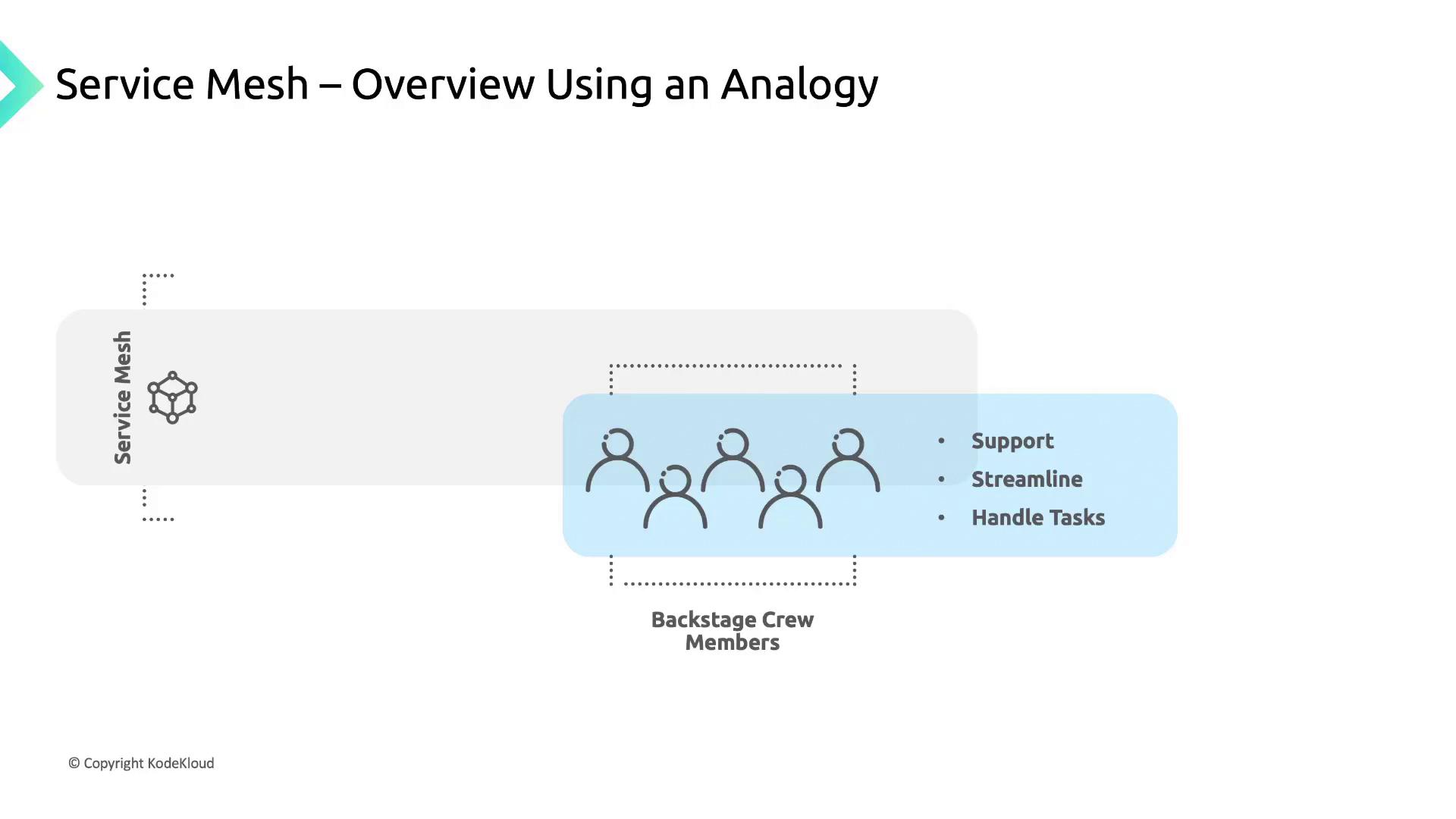
Core Functions of a Service Mesh
A service mesh adds an infrastructure layer alongside your services to handle essential concerns:
| Function | Description | Festival Role |
|---|---|---|
| Monitoring | Captures performance metrics for each service | Metrics team tracks performer stats |
| Networking | Manages service‐to‐service communication and load balancing | Sound crew coordinates audio levels and crowd flow |
| Security | Enforces access control, encryption, and authentication | Security guards control backstage entry |

In our festival analogy:
- Monitoring teams track each performer’s metrics.
- Networking crews coordinate sound systems and manage traffic between stages.
- Security teams ensure only authorized personnel access VIP areas.
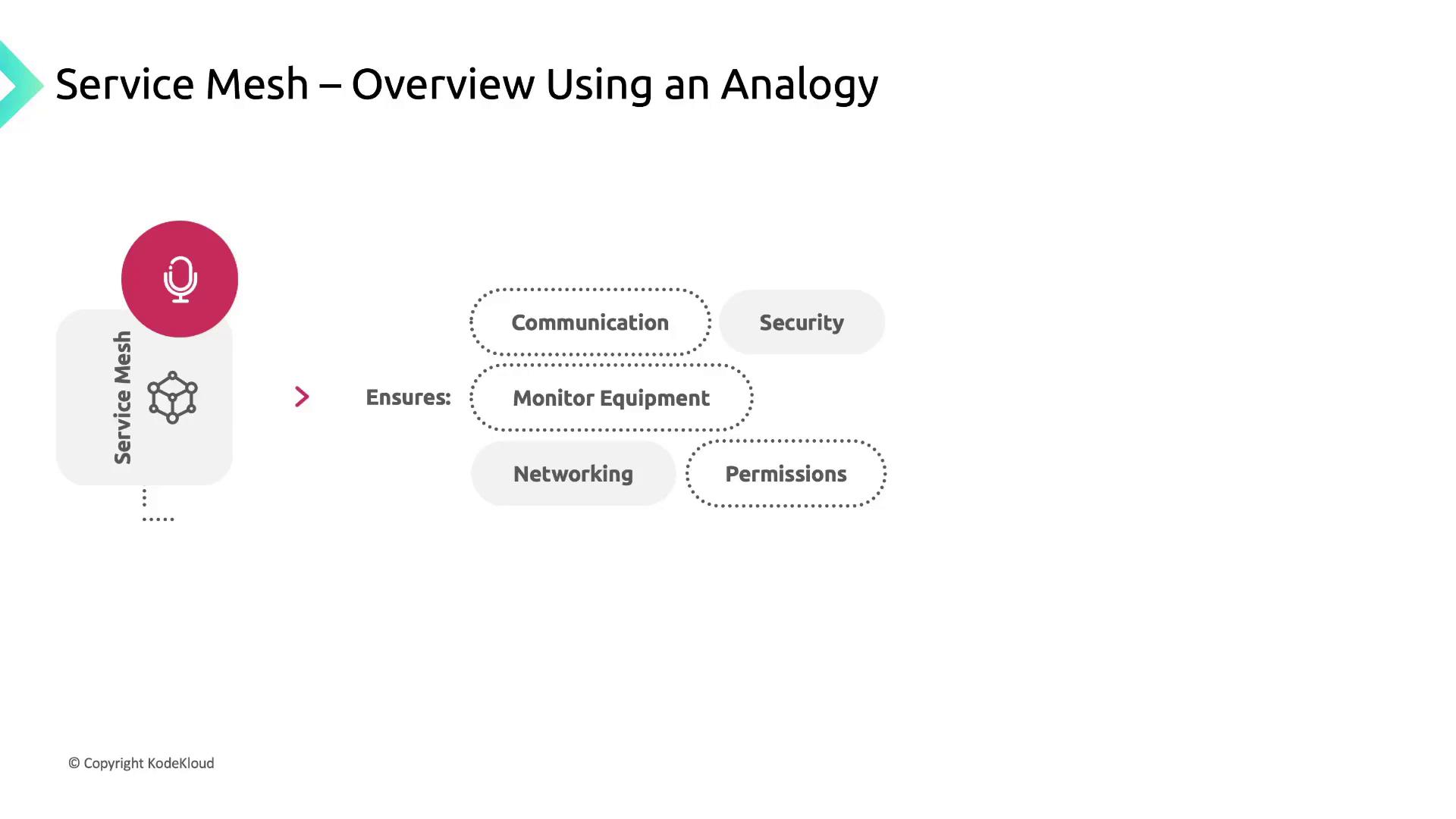
Dynamic Traffic Control & Observability
With a service mesh, you can:
- Throttle, block, or reroute requests in real time
- Configure retries, timeouts, and circuit breakers
- Gather end‐to‐end metrics and distributed traces
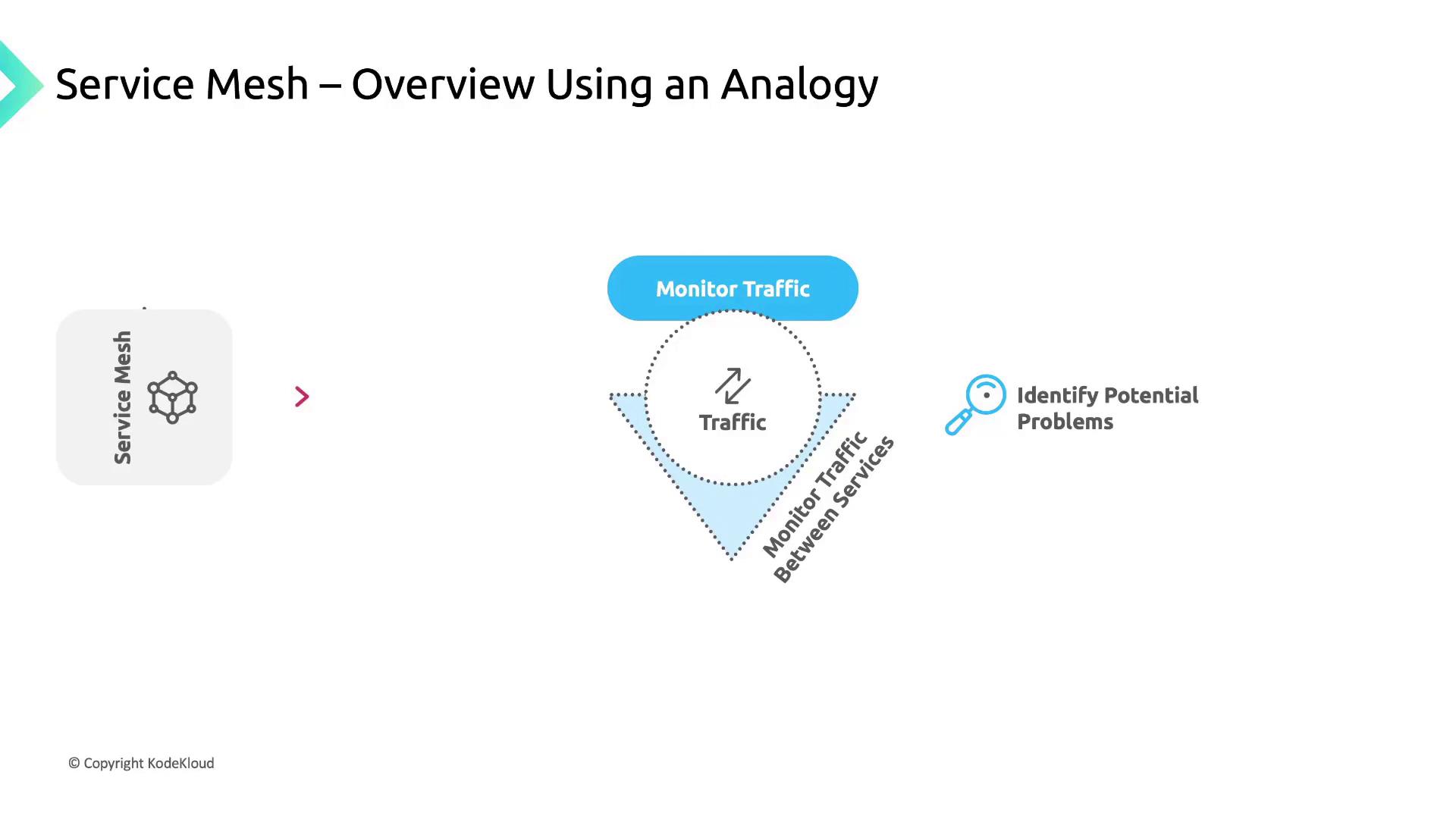
Note
Service meshes decouple the networking, security, and observability layers from application code. This lets developers focus purely on business logic.
Anthos Service Mesh on GKE
As organizations adopt hybrid and multi‐cloud environments, operational consistency becomes critical. Anthos is Google Cloud’s unified platform for modernizing applications across diverse infrastructures. Anthos Service Mesh extends open‐source Istio with enterprise-grade features and deep GKE integration.
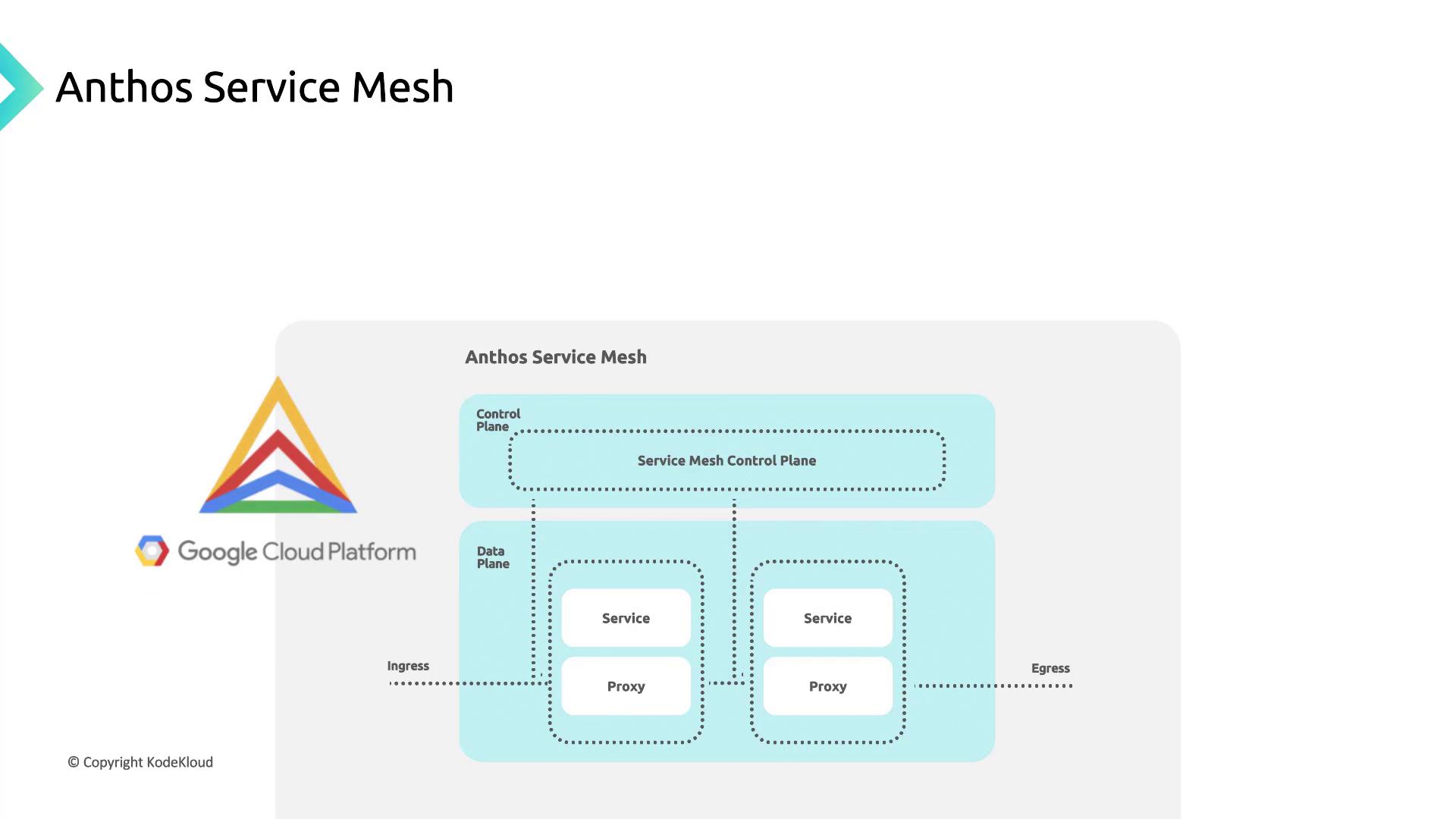
Warning
Deploying Anthos Service Mesh introduces additional control‐plane components and sidecar proxies. Plan for increased CPU and memory usage on your cluster nodes.
Key Features of Anthos Service Mesh
Anthos Service Mesh builds on Istio to provide:
Traffic Management
Fine‐grained routing, retries, fault injection, canary and A/B testing for inbound and outbound traffic.Service Registry
A dynamic catalog of services and endpoints that keeps routing rules up to date.Observability
Preconfigured dashboards in Google Cloud Console for metrics, logs, and distributed traces—offering a unified view of service health.Security
Mutual TLS (mTLS) for encrypted service‐to‐service communication, policy‐based access control, and automated certificate management.
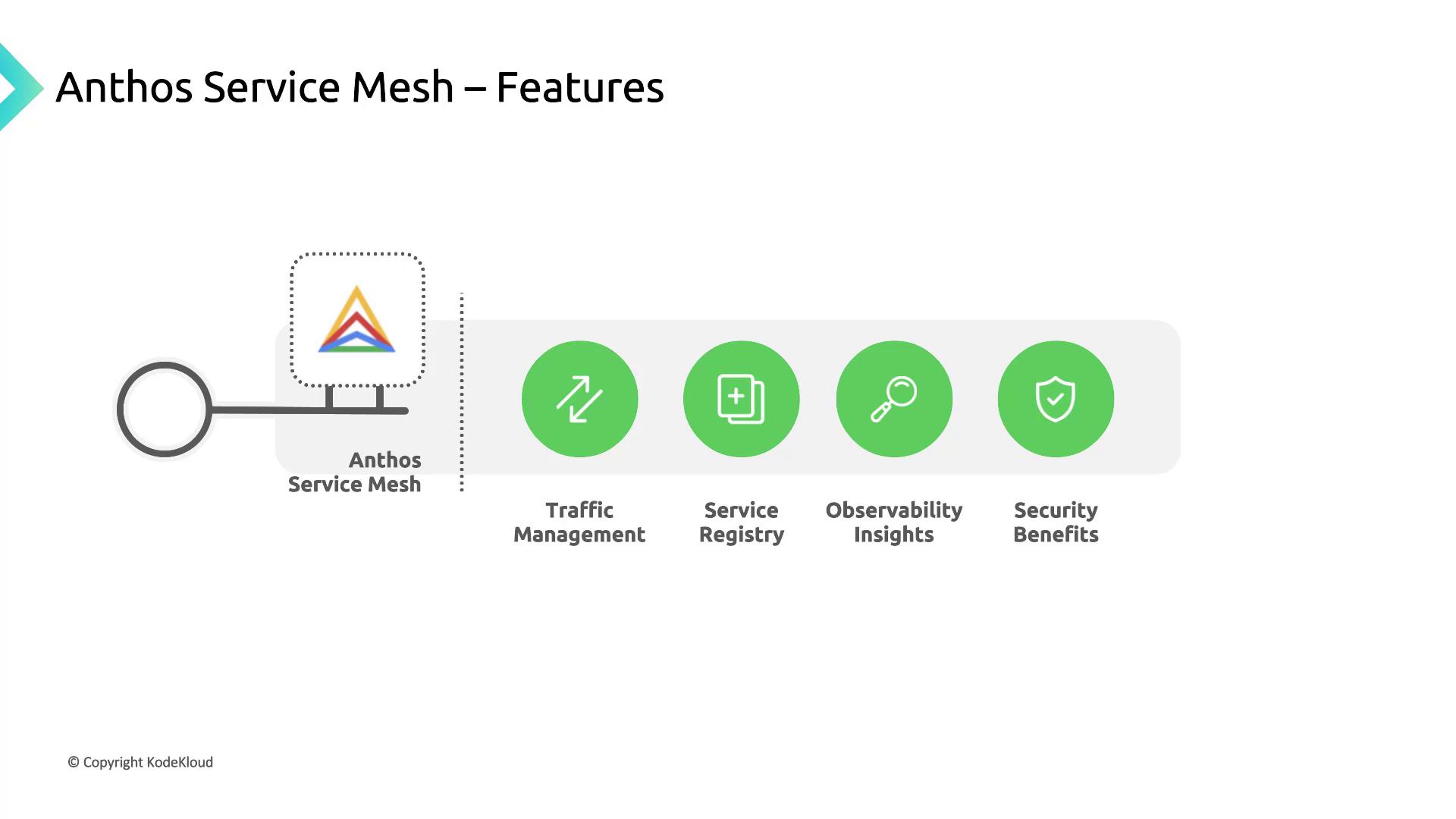
Next Steps and References
To get started with Istio on GKE and Anthos Service Mesh:
- Follow the GKE Quickstart.
- Install Anthos Service Mesh using Google’s setup guide.
- Explore Istio’s documentation for policy and telemetry recipes.
Further Reading
- Kubernetes Networking
- Istio Traffic Management
- Anthos Service Mesh Overview
- Google Cloud Observability
- Istio Security
Watch Video
Watch video content